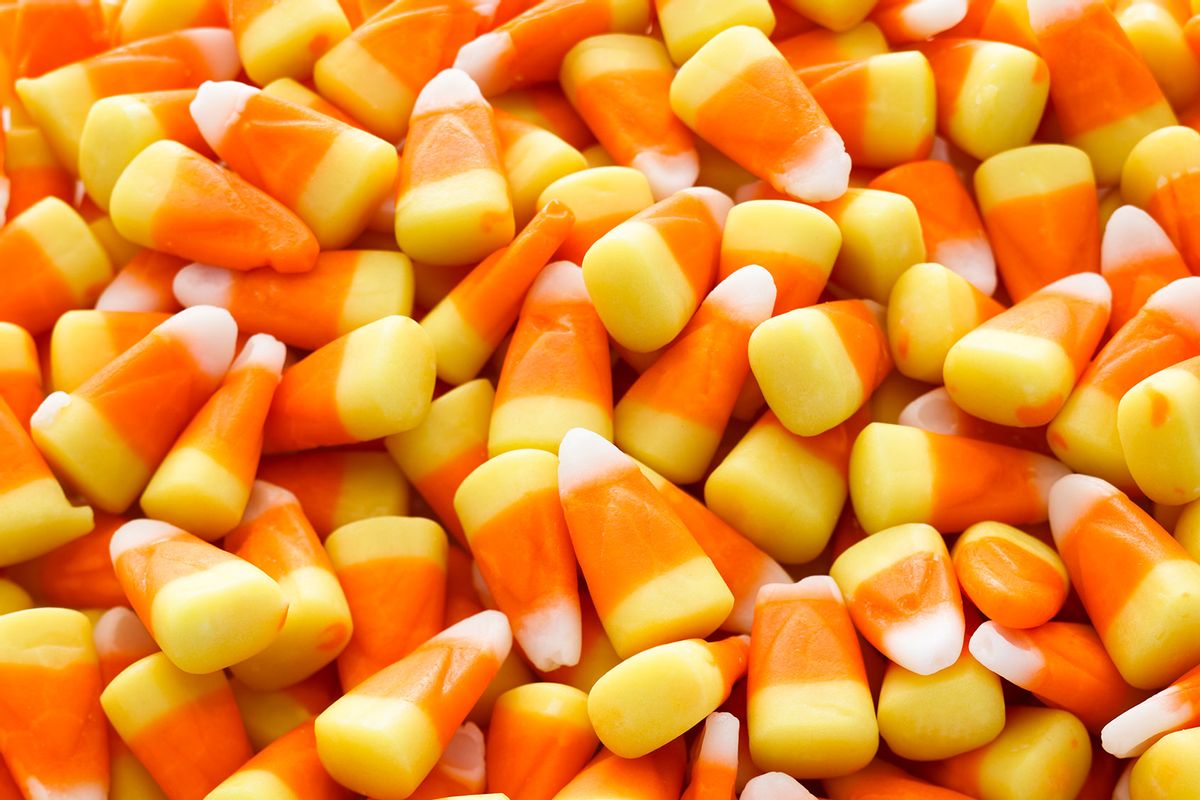How candy corn became the villain in our modern Halloween lore

I’ve always had a real soft spot for foods and food institutions that seem impervious to an artisan touch — seedy bars, old-school diners, the Italian beef joint where they’ll tell you to “f**k off and come back when you’re ready” if you dawdle at the counter. This ethos extends into individual dishes, as well, and a lot of holiday classics fit the bill, such as fruitcake and green bean casserole, and of course, candy corn.
Candy corn wasn’t a huge part of my childhood Halloween experience. I’m sure I received a few of those little orange-yellow-and-white shards of corn syrup in my trick-or-treating bucket while growing up (OG McDonald’s Halloween pail for the win!), but I don’t remember loving or hating them, which seems to be our culture’s current default setting when it comes to candy corn.
After all, for years, headline writers and meme-makers have made a meal out of candy corn slander.
Our food culture isn’t one that really rewards indifference. Just look at how we talk about food online. There are more recipes marketed as the “best chocolate cake you’ve ever tasted” than ones for “a totally passable-for-a-weeknight chocolate cake.” It’s a kind of hyperbole that is rewarded during every step of the process, from search engine placement to social media shares, until a recipe finally momentarily transcends into culinary mononym territory, like “The Cookie” or “The Stew.”
In 2014, Deadspin published the article “Candy Corn Is Garbage,” which said the candy was the diet of “hobos, serial murderers and Satan.” A few years later, The Takeout referred to it as “Satan’s earwax.” I’ve been up for only a few hours this morning, and I’ve already seen four memes with the same punchline: “How to eat candy corn? The first step is to stick it in the trash.”
The online hate for candy corn is outsized when compared to actual consumer data — or, you know, the data that can be found detailing the candies customers hate the least. In an ironic move, Byte, a teeth aligner startup, surveyed over 1,000 Americans, finding that only 34% of respondents indicated they “hated” candy corn. Twenty-two percent said they loved it, while the remaining respondents were indifferent.
Want more great food writing and recipes? Subscribe to Salon Food’s newsletter, The Bite.
Simultaneously, culinary horrors tend to captivate audiences. As Sam Stone wrote for Bon Appetit earlier this week, scathing restaurant reviews have reached TikTok, and this breed of review is particularly cutting, with virality in mind. One reviewer told Stone: “People want the drama — and that’s what we’re giving.”
Candy corn — a simple, slightly waxy, amalgam of notes of butter, sugar and vanilla — isn’t really splashy enough on its own to drive drama. As such, it needed to be conscripted into a narrative and assigned a role. In this case, candy corn became the villain that should’ve never been born.
While this may sound like a stretch, we’ve gotten really good at doing this within our food culture, especially when it comes to seasonal offerings such as Peeps and pumpkin spice lattes. The stories we tell about these foods and the debates surrounding their merits have become part of our modern-day holiday lore.
While many Halloween candies have artisan analogues, gourmet candy corn varieties are thin on the ground. I know because I went on a multi-store tour in search of some this week. Some were good, most were just fine, none of them were earth-shatteringly fantastic or bad.
For better or worse, candy corn is largely the same now as it was when it was first invented by George Renninger in the 1880s at the Wunderle Candy Company — a fact that is actually really refreshing in a world where I have three uniquely-shaped ice cube trays to ensure I always have the “right ice” for a coffee or cocktail. In the story of candy corn, it was never really the villain. Our expectations for it were.
To borrow a phrase from the Italian beef joint, when it comes to candy corn, “f**k off and come back when you’re ready” to accept it for what it is.
Read more
about this topic

